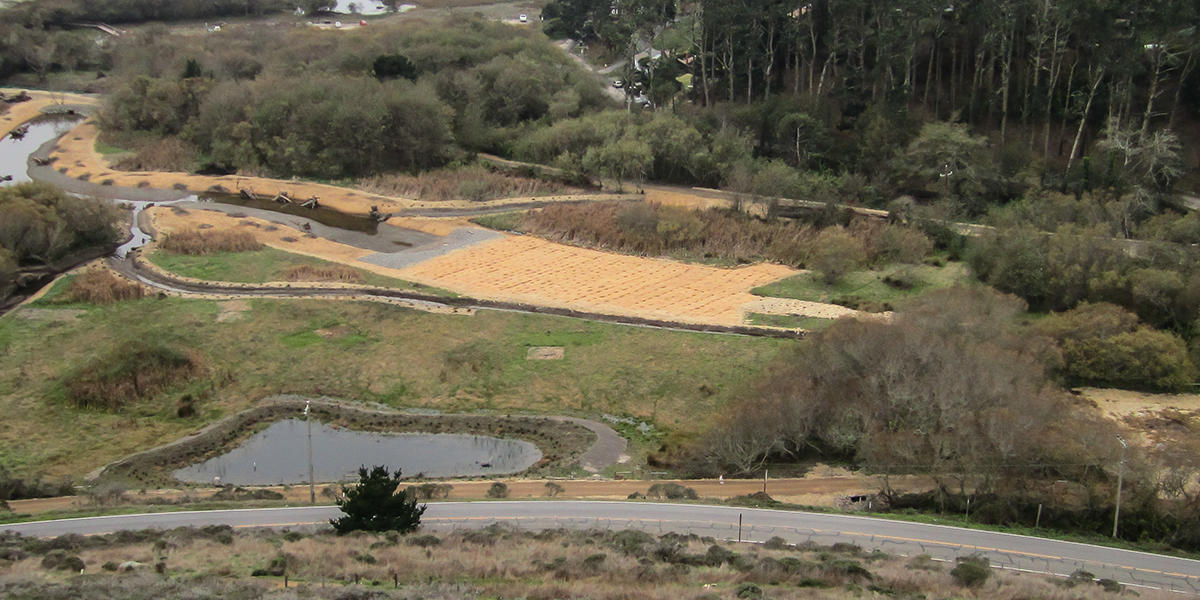Your parks need you now
Your support helps fight climate change and promote park sustainability—please give now.

Jute is a natural and permeable textile fabric that is made from two varieties of plants related to hibiscus and cotton: white jute (Corchorus capsularis) and tossa jute (Corchorous oblitorius). The fabric is made from the outer stem of the plant in a process called retting, in which the unwanted plant fibers are soaked and broken down by natural bacteria, thus producing a workable fiber.
Originating in Bangladesh, this staple material has been used for thousands of years due to its strength and versatility. Some cultures have used jute to make clothing, bags, tents, or ropes. At Muir Beach, jute looks like ropes tightly woven into coarse fabric.
This fabric serves as biodegradable erosion control. The jute fabric stabilizes the soil by minimizing displacement due to wind and water. To continue this process of soil stabilization, this winter, volunteers will be carefully planting around 10,000 plants through the jute fabric.
With rain, sun, and wind the jute fabric will slowly fade and break down into the environment. Just wait—it's only a matter of time now before you forget the material was ever covering the floodplain! The native plants will grow tall and the vegetation itself will be the best long-term erosion control.
In order to get the much-needed 10,000 plants in the ground, we need the help of volunteers! For more information about how to pitch in and help, visit our website or contact Naomi LeBeau, Marin Community Programs Manager.
By Georgia Vasey and Diana Feldmann
Park Stewardship (Marin County) interns
Your support helps fight climate change and promote park sustainability—please give now.